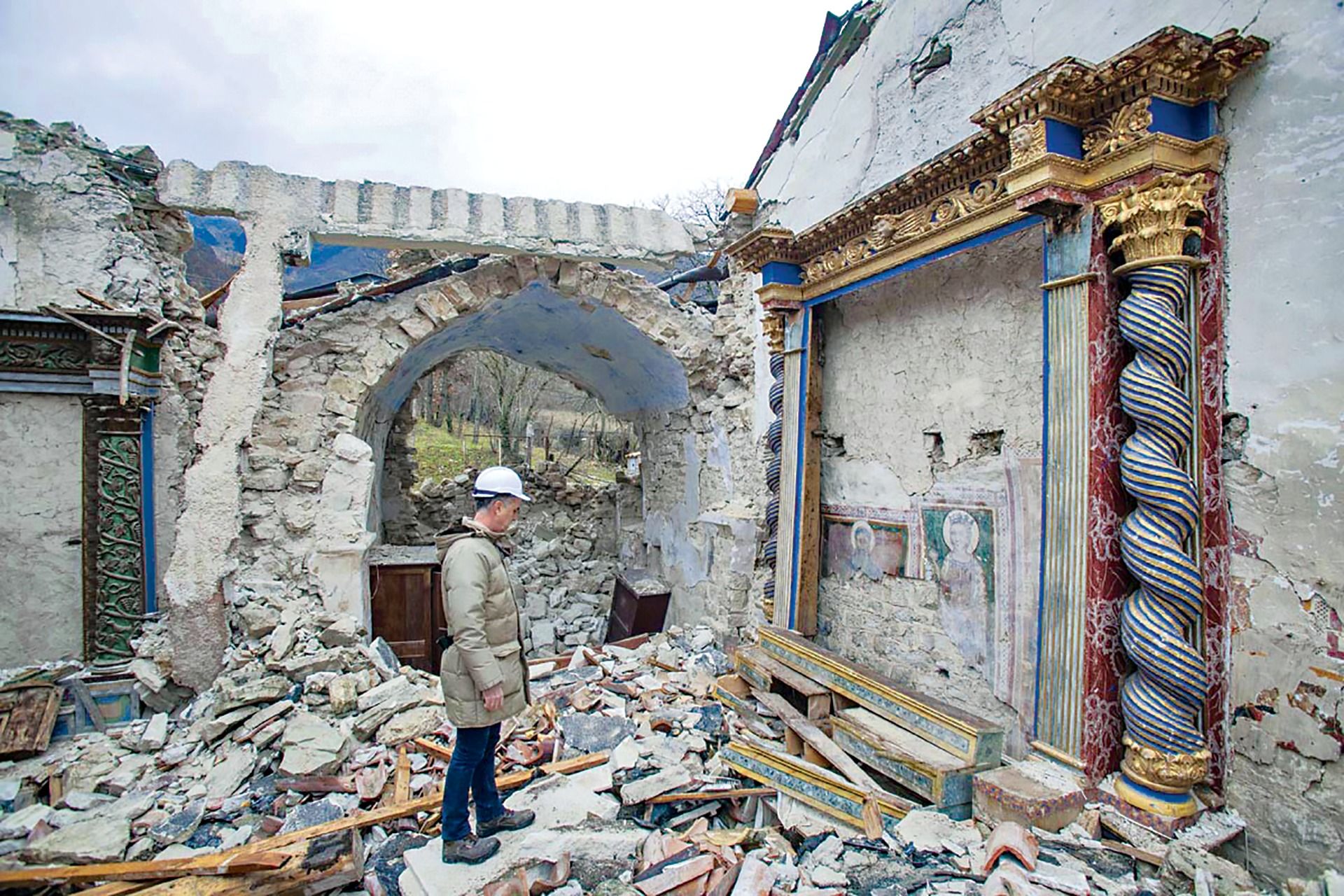In the hinterland of Italy’s Marche region, which was devastated by severe earthquakes last August and October, fears are growing that local heritage will be preserved elsewhere and never return. Several officials in these hilltop towns are highly critical of the Italian culture ministry and its central “crisis unit”, which has overseen rescue efforts since the first quake. Mayors and representatives of all 57 administrations in the province of Macerata have written to the ministry demanding that works of art be stored and restored locally, reports our Italian sister newspaper Il Giornale dell’Arte.
There are encouraging signs of progress, such as the reopening in early December of the Padre Tacchi Venturi gallery in San Severino Marche, which holds Medieval and Renaissance works by artists including Paolo Veneziano, Lorenzo Salimbeni and Pinturicchio. But government bureaucracy is hampering the recovery of religious paintings, sculptures and buildings in this art-rich region, says the architect Luca Maria Cristini, the director of cultural heritage for the diocese of Camerino, which includes 486 churches. “For every intervention, I have to specify the plot of land, the resources, the expenses, the owner of the work and provide a description. It’s an absurd procedure,” he says. “If there’s a bell tower to prop up, it’s an emergency.”
The ministry quickly evacuated works from the Museo Diocesano of Camerino to safety. A 14th-century French reliquary, which Pope Sixtus V donated to his hometown of Montalto in 1587 and underwent restoration in 2013 at the Opificio delle Pietre Dure in Florence, is also in storage.
But Paola di Girolami, who directs the ten Sistine museums in the diocese of San Benedetto del Tronto, says that the local branch of the ministry is overstretched and inconsistent: “The Soprintendenza is understaffed. The teams come from outside, lose their way in the streets and then they have to return to Ancona.” The regional capital on the coast has offered the Mole Vanvitelliana, a former citadel and hospital, as a storage centre for the art salvaged from the surrounding towns and villages.

“The works should not be going to temporary deposits in Ancona; it takes away our historical identity and tells tourists not to come,” says Alessandro Delpriori, a trained art historian and the mayor of Matelica. He is seeking an agreement with the culture ministry to turn a local venue into an “earthquake-proof” temporary storeroom that could open to the public in the summer. Discussions were under way in late January to create four or five such stores across the Marche. More than 2,000 churches in the region remain inaccessible and have not yet been inspected, Delpriori adds.
But Carlo Birrozzi, the ministry’s superintendent for archaeology, art and the landscape in the Marche, hits back at the criticism. In early January, more than 2,800 works of art had been retrieved from more than 100 damaged churches and historic buildings in the region, compared with around 900 in Umbria, 500 in Abruzzo and 300 in Lazio during earlier quakes, Birrozzi says. “Many more works were damaged in this earthquake than in [previous disasters]. We have made hundreds of inspections with limited staff.” (The superintendency team includes just seven architects and three art historians, two of them part time.) Bureaucracy is vital, Birrozzi says, to ensure that works will eventually return to their original locations. And with minor tremors ongoing in central Italy, “leaving works in the most at-risk zones carries the danger of losing them”, he warns.
On a tour of the region this week, the Italian culture minister Dario Franceschini reassured local officials that all the works that have been temporarily transferred elsewhere will eventually come home. “We will do our utmost so that they stay in the region even in the storage and restoration phase,” Franceschini said. However, he added: “It is impossible to estimate the timescale... this is a titanic operation.”


